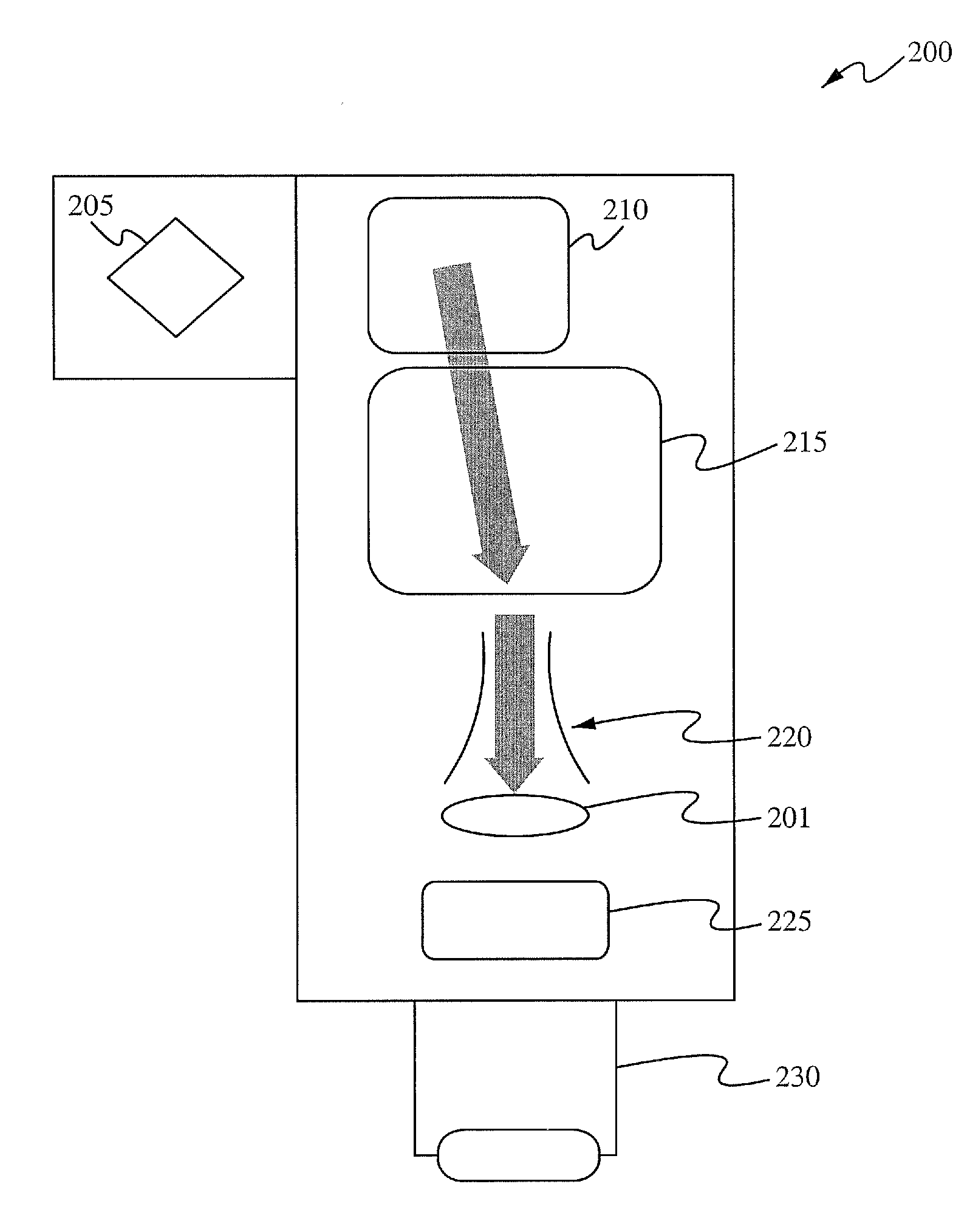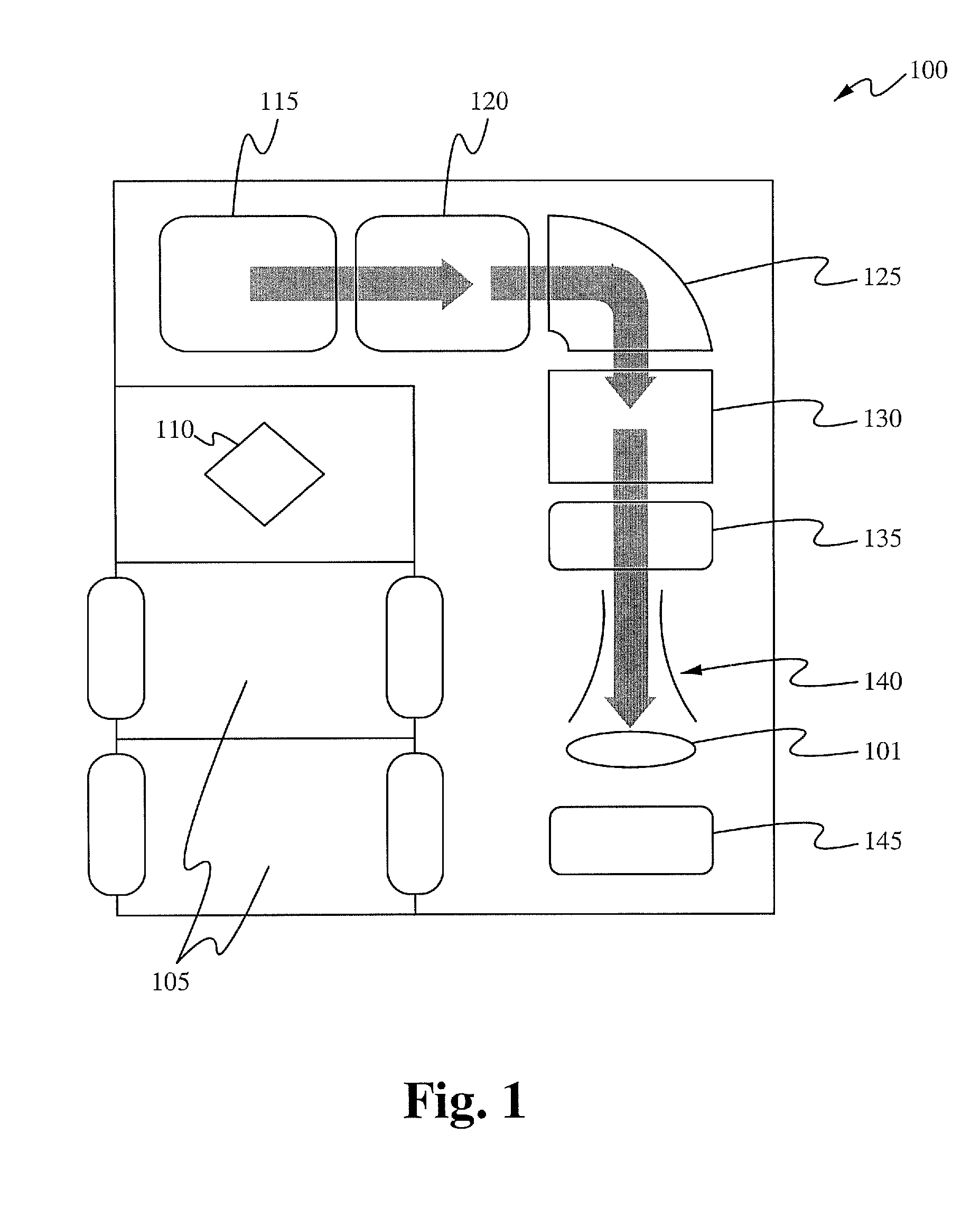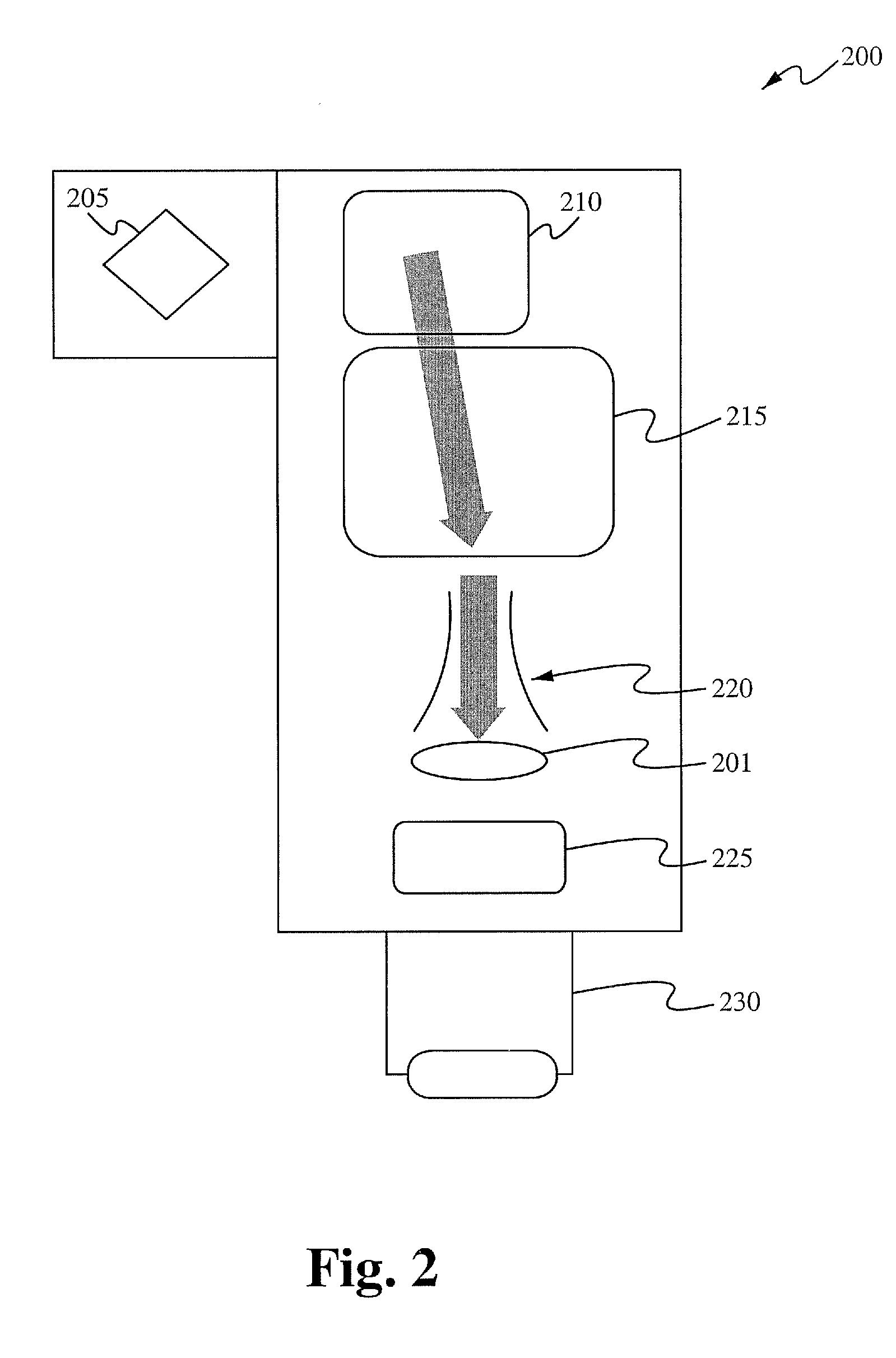Application specific implant system and method for use in solar cell fabrications
a solar cell and implant system technology, applied in the field of solar cell systems and methods, can solve the problems of reducing system productivity, affecting the quality of solar cells, and only consuming about 200 wafers per hour,
- Summary
- Abstract
- Description
- Claims
- Application Information
AI Technical Summary
Benefits of technology
Problems solved by technology
Method used
Image
Examples
Embodiment Construction
[0029]Systems in accordance with the invention are specifically tailored to fabricate specific semiconductor devices, such as solar cells. These systems use tolerances that are more relaxed than those required to fabricate other semiconductor devices. They fabricate devices more quickly, less expensively, and in a smaller space than do prior art systems. Such systems are capable of producing at least 1,000 solar cells per hour.
[0030]Systems are further simplified because no charge neutralization is used since wafers have no featured coverings, scanning is simplified, and mass analyses can be performed using other methods. All of these advantages result in an output higher than can be realized using traditional semiconductor fabrication systems.
[0031]Systems in accordance with the embodiments also produce more efficient solar cells, solar cells with doping profiles tailored to reduce ohmic losses and the effects of dead layers.
[0032]FIG. 2 shows a system 200 for fabricating solar cel...
PUM
 Login to View More
Login to View More Abstract
Description
Claims
Application Information
 Login to View More
Login to View More - R&D
- Intellectual Property
- Life Sciences
- Materials
- Tech Scout
- Unparalleled Data Quality
- Higher Quality Content
- 60% Fewer Hallucinations
Browse by: Latest US Patents, China's latest patents, Technical Efficacy Thesaurus, Application Domain, Technology Topic, Popular Technical Reports.
© 2025 PatSnap. All rights reserved.Legal|Privacy policy|Modern Slavery Act Transparency Statement|Sitemap|About US| Contact US: help@patsnap.com



